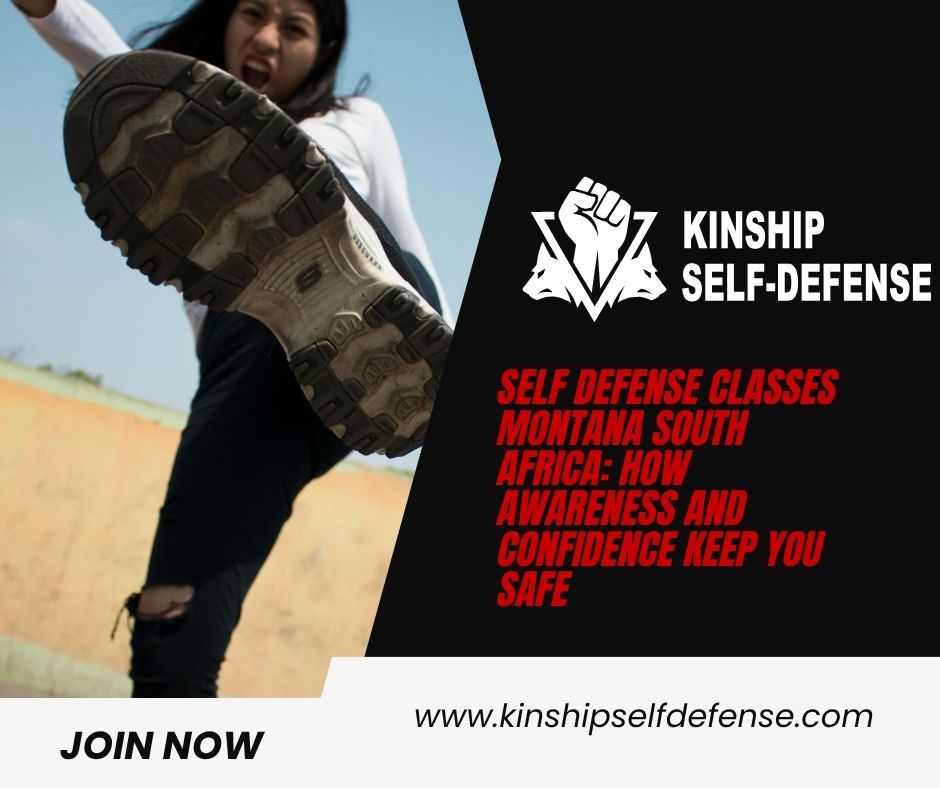Self Defense Classes in Montana Pretoria: Awareness, Confidence, and Safety
If you live or spend time around Montana Pretoria, you know how important it is to feel safe when you walk outside. Whether it is heading home after work, dropping kids off at school, or just enjoying a walk near Montana Mall, staying alert can make all the difference. That is why more people are signing up for self defense classes Montana South Africa offers. These classes are not just about fighting. They teach you how to be aware, confident, and ready to act when needed.
I have talked to quite a few people here who have taken these classes, and they say it gave them a new way of seeing their world. One woman told me how she used a simple awareness trick from class when walking home at night and spotted a suspicious person before anything happened. Knowing she was not an easy target helped her avoid danger without having to fight. Stories like hers show why self defense is as much about your mind as your body.
In this article, I want to break down some key ideas behind self defense training in Montana South Africa. You will learn how environmental and self awareness, reading people, body language, and handling stress all work together to keep you safe. Plus, I will explain how martial arts, personal training, fitness, and women’s protection classes fit into the picture.
Environmental and Self Awareness: Becoming an Undesirable Target
The goal of self defense is to avoid becoming a target in the first place. Predators look for people who seem weak, distracted, isolated, or vulnerable. Those traits invite trouble. So part of your self defense training is about how to avoid looking like a victim.
Key Traits of an Undesirable Target
- Appears confident
- Maintains environmental awareness
- Is alert to what is happening around them
- Prepared to act if needed
People often say, “Look confident.” But looking confident is not the same as being confident. Real confidence comes from a mindset built with intent and practice, not just standing tall or putting on a scowl.
👉 For more on confidence, see How Awareness and Confidence Keep You Safe.
The Awareness Game: Simple Daily Habits That Make a Difference
- The Listening Game: When you hear a noise that stands out, name it in your head or out loud. This practice sharpens your awareness and keeps your posture naturally alert.
- The Peripheral Glance: Use your side vision to notice movement. Spotting things early makes you less attractive as a target.
Together, these habits change your body language. You appear calm, alert, and confident without seeming paranoid or aggressive.
👉 Explore more in Situational Awareness for Self Defense.
Behavioral Awareness: Reading People and Their Intent
People say only 10% of communication is through words. The rest comes from body language, facial expressions, and tone of voice. Learning to read these cues helps you detect warning signs before danger becomes obvious.
What to Focus On Beyond Words
- Arm and hand position, posture
- Facial micro-expressions
- Tone and cadence of voice
Red Flags
- Sudden changes in behavior or attitude
- Inconsistent kindness (e.g., “nice to you but cruel to the waiter”)
- Manipulative charm
Recognizing Precontact Indicators
- Shifts in posture or leaning forward
- Clenched fists, tight jaw muscles
- Hiding hands or reaching toward waistbands
- Invading personal space
👉 For practical training in spotting these signs, see What to Expect at Your First Self Defense Class.
The Adrenal Stress Response: What Happens During an Attack
When your brain senses danger, adrenaline triggers the fight, flight, or freeze response. You may experience tunnel vision, muffled hearing, or frozen reactions.
Self defense training teaches you to act despite this stress. Scenario drills and repetition help build gross motor responses that work under pressure.
👉 Learn about the science in Strength, Awareness, and Reaction Time: The Science Behind Self-Defense Training.
Dealing With Post-Traumatic Stress (PTSD)
After an attack, people may struggle with PTSD symptoms — from anxiety to isolation. Coping requires therapy, family support, peer groups, and healthy routines.
Self defense classes often integrate mindset training to help students process fear and build resilience.
Color-Coded Risk Evaluation Guide for Everyday Safety
Richard Dimitri adapted Jeff Cooper’s system to help civilians stay aware.
- Code Green: Safe, relaxed at home
- Code Yellow: Public environment, relaxed alertness
- Code Red: High risk, alone at night, ready to defend
These mindsets help you prepare appropriately for your environment.
How Martial Arts, Personal Training, and Women’s Protection Fit In
Self defense in Montana includes not only fighting moves but also fitness, discipline, and confidence.
- Martial arts: Teach discipline, timing, and body control. See Krav Maga vs. Traditional Martial Arts.
- Fitness training: Builds strength and endurance for stressful encounters.
- Women’s protection: Focuses on simple, effective escape moves. See Women’s Self Defense in Pretoria.
- Teen and kids’ training: Builds awareness early. See Empower Your Teen and Can Kids Learn Self Defense?.
Where to Find Self Defense Classes in Montana Pretoria
Montana Pretoria has several options for training, from private lessons to group programs.
👉 Review your options in The Cost of Self Defense Training in Pretoria: Is It Worth It?.
For more info on laws, check Self Defense Laws in South Africa.
Final Thoughts
Self defense classes in Montana South Africa teach you how to be alert, confident, and ready. The skills go beyond fighting — they help you avoid danger, read people, manage stress, and stay fit.
If you want to feel safer walking Montana streets or simply build confidence, taking a self defense class can change your life.
👉 Start with our Complete Guide to Self Defense in Montana and Contact us to book your first session.

Pingback: Verbal De-Escalation: 5 Rules That Could Save Your Life